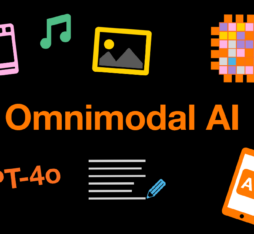• He is convinced that AI will oblige architects to better define building projects while helping them to predict and optimize design solutions.
• He welcomes the adoption of tools like ChatGPT, which can produce code for the creation of generative art and enable creatives to derive more benefit from the power of computing.
How will AI affect the evolution of tools for architects?
In the space of twenty-five years, we’ve gone from paper and pencil to graphics tablets and virtual reality, not to mention 3D printing. Now we can suddenly speak to our computers and ask them to help us design things. AI is therefore different to previous technologies. It is the start of what looks to be a big sea change. We need to examine it critically to try and understand what these technologies can and cannot do, and to interrogate them for their affordances, their biases, their strengths, their weaknesses, and their challenges. I can already see that AI is going to change the way we teach architecture: I have students who are very good at drawing but who don’t enjoy writing. Now for the first time, they are having to structure their ideas in writing in order to be understood by generative AI tools. It’s really interesting, because it helps them to pinpoint exactly what they’re trying to do and what they’re trying to accomplish, which helps them to understand and internalise their ideas, so they can talk about them much more articulately.
ChatGPT helped me to write code and to take advantage of computational design even though I have no formal training to do that.
Is AI opening up potential opportunities for architects?
Some of the tools that architects already use on a daily basis, such as Adobe Photoshop, already incorporate generative AI, and we know that certain companies which develop strictly architectural engineering tools are not far behind in incorporating AI into their workflows. In architecture, AI is, in my view, particularly useful in that it can make predictions and optimize designs to take into account complex data. Because when you have complicated architectural problems where there are lots of competing concerns and constraints to be considered, it’s very difficult for our human brains to come up with optimal solutions. Any good piece of architecture must respond to a wide range of systems. These include tangible systems such as transport and other physical urban systems, but also cultural systems. Projects, whether they be in Paris, New York or in Istanbul, need to have a situational awareness that relates to the city where they are being built. There are a huge number of parameters to take into account.
https://www.instagram.com/p/CxDP7RUr0P7/?utm_source=ig_web_copy_link&igshid=MzRlODBiNWFlZA==
You have more than 120,000 followers on Instagram where you share architectural works that you mainly produce with Midjourney. How would you describe your use of the platform?
Posting on Instagram enables me to create an archaeological archive on AI tools that documents what they can and cannot do and the evolution of their application in architecture. I make my work public without correcting all its imperfections to help people make up their own minds about AI. The reality is that there are many people who are poorly informed about this subject, or even have opinions about it that are based on disinformation. We should be engaging in a productive debate on what is happening with this technology. There are a large number of artists who find it immensely frustrating, because they perceive AI as a threat. However, I don’t think our focus should be on who is using AI and who is not. AI is there: the genie is out of the bottle. If we ignore it, we will which ran aground when it opted to ignore the emergence of digital photography.
A futurist interior created using Midjourney’s generative AI.
You also work with ChatGPT. Can you tell us how it is useful for architects?
To generate the pictures that I mostly publish on Instagram, I mainly work with Midjourney, which accepts text prompts and images. At the same time, I have also tested ChatGPT to write generative art scripts for other platforms, and to use JavaScript, Python and other programming languages. I should say that I have very little experience of programming. ChatGPT helped me to write code and to take advantage of computational design even though I have no formal training to do that. It is very exciting, because a lot of creatives aren’t necessarily taught how to leverage computation. So artificial intelligence can provide the means to liberate designers from having to learn all the ins and outs of coding while enabling them to use it nonetheless, and to make complex technologies accessible to those of us who aren’t necessarily technologists.
One of Vermillion’s science-fictional AI creations.
Featured picture: one of Joshua Vermillion’s digital artworks featuring jellyfish inspired light fixtures.












